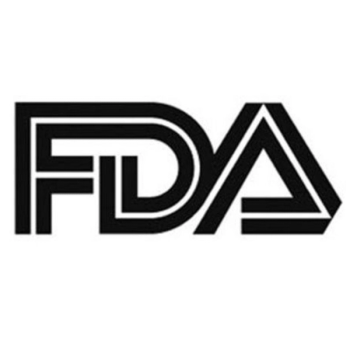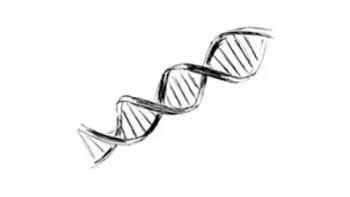
Experts Discuss the Spearhead 1 Trial and Other ASCO Data for Sarcoma Awareness Month
During the 2021 American Society of Clinical Oncology Annual Meeting, multiple trials for targeted treatments were presented for soft tissue sarcoma. Dean Frohlich, PhD, and Brian A. Van Tine, MD, PhD, discuss the the results of some of these presentations, including the Spearhead 1 trial.
To treat soft tissue sarcoma, a rare cancer type that can be found in any part of the body, patients can receive surgery, radiation, or chemotherapy in the first line.1 However, targeted therapy options are limited in this space because of the rarity of the disease type and a lack of funding.
“Doxorubicin-based chemotherapy still remains the gold standard for treatment in locally advanced metastatic soft tissue sarcoma in the first-line setting.” Dean Frohlich, PhD, director of scientific affairs at the Sarcoma Foundation of America, said in an interview with Targeted Oncology.
During the 2021 American Society of Clinical Oncology (ASCO) Annual Meeting, multiple trials for targeted treatments were presented for soft tissue sarcoma. Some of the most exciting data were from the phase 2 Spearhead 1 trial (NCT04044768) evaluating T-cell therapy in advanced and/or metastatic synovial sarcoma or myxoid/round cell liposarcoma (MRCLS).2 The therapy used in this single-arm, open-label study, afamitresgene autoleucel (formerly ADP-A2M4), targets melanoma-associated antigen 4 (MAGE-A4), an embryonic tumor antigen often expressed in patients with synovial sarcoma and MRCLS.
“The treatment of synovial sarcoma classically is with palliative chemotherapy. Where this really fits an unmet need is that this is a single infusion after chemotherapy,” Brian A. Van Tine, MD, PhD, one of the authors on this trial, said in an interview with Targeted Oncology. “After that one infusion, the modified T-cells continue to do their work, thus continuing to treat the patient. This provides the highest quality of life you can possibly have, because you're not coming back every 2 to 3 weeks for treatment or on a pill every day.”
In a previous signal-finding, phase 1 trial (NCT03132922), patients with HLA-A*02-positive tumors and MAGE-A4 expression demonstrated an “unusually high signal in this first trial that was both durable and the response rate was high,” according to Van Tine, an associate professor of medicine at Washington University School of Medicine in St Louis. Spearhead 1 is the confirmatory next-phase trial following these encouraging responses.
To be enrolled in Spearhead 1, patients went through screenings to see whether they had the correct HLA genotype and to find whether they had MAGE-A4 expression in 30% or more of their tumor cells. Patients between ages 16 and 75 years also needed an ECOG performance status of 0 or 1 and prior therapy with an anthracycline- or ifosfamide-containing regimen.
A total of 37 patients treated with 1×109 to 10×109 transduced T cells included in the adverse event (AE) and baseline characteristics data. There were 33 patients in the modified intent-to-treat population who had at least 1 scan by the time of the data cutoff. These 33 evaluated for overall response rate (ORR) per RECIST v1.1 by independent review, overall survival, progression-free survival (PFS), duration of response (DOR), and time to response.
“I think the data that are coming out of this early interim analysis of the Spearhead 1 trial is noteworthy for a few things,” Van Tine said. “First, the ORR of the patients in the trial is nearly 40%, with 13 out of 33 patients responding. It’s a little higher in the synovial sarcoma arm at 41.3% [n=12/29], because there were patients with MRCLS who were allowed in the trial.” There was a 25.0% ORR in the MRCLS population (n=1/4).
Two patients with synovial sarcoma achieved complete response. The disease control rate was 84.8% in the modified intent-to-treat population. The median DOR was not reached (range, 4.3+ to 38.0+ weeks). “The responses are durable up to almost a year in a subset of patients. These are early data and I think it’s only going to get better as more patients enroll,” Van Tine said.
Any-grade treatment-related AEs (TRAEs) were seen in 95% of patients and grade 3 or more were seen in 92%. The most common grade 3 or more TRAES were lymphocyte count decrease in 84%, neutrophil count decrease in 68%, and white blood cell count decrease in 62%. Cytokine release syndrome was considered an AE of special interest and was observed in 59% of patients at any grade and in 3% at grade 3 or more. Van Tine noted that the number of serious AEs compared with the phase 1 trial have come down.
“It’s still in its early stages,” Frohlich said. “We may be able to see that [therapy being used] down the line, but those results are promising at least.” Van Tine hopes that an FDA approval will eventually follow these positive results, especially after longer-term follow-up, and the investigators can then try to expand this therapy to all patients with synovial sarcoma and MRCLS.
Another trial upcoming in patients who are HLA-A*02 and MAGE-A4 positive is the Surpass trial evaluating ADP-A2M4CD8 (NCT04044859). Those with urothelial carcinoma, head and neck, non–small cell lung, gastric, and esophageal cancer and esophagogastric junction disorder are eligible for enrollment. This phase 1 dose-escalation study “will show the utility of this therapy beyond synovial sarcoma and will be useful to any patient with a biomarker that can be used as an identifier. If you have the identifier to help the HLA, this will then allow you to, in a potentially tumor-agnostic way, move forward,” Van Tine said.
Additionally, data for catequentinib (anlotinib, AL3818), an oral tyrosine kinase inhibitor (TKI), were presented by Van Tine at ASCO 2021. This was in patients with metastatic or advanced synovial sarcoma from arm C of the phase 3 APROMISS trial (NCT03016819).3 Patients were randomized 2:1 to 12 mg/d of catequentinib for 2 weeks of a 3-week cycle (n=52) versus dacarbazine (DTIC-Dome; n=27). Crossover was allowed on this trial.
The primary end point of median PFS for patients receiving catequentinib was 2.89 months compared with 1.64 months with dacarbazine (HR, 0.449; 95% CI, 0.270-0.744; P=.0015). The PFS rate at 4, 6, and 12 months was 48.1%, 42.3%, and 26.9% with catequentinib versus 14.9%, 11.1%, and 3.7% with dacarbazine, respectively.
“What’s interesting about catequentinib is it’s just like what we do with gastrointestinal stromal tumors. It’s a second oral TKI where the prior use of pazopanib didn’t seem to affect outcomes, so you can go from one to the other. It gives you a second oral medication to try,” Van Tine explained.
Catequentinib also demonstrated less toxicity than pazopanib, according to Van Tine. The most common grade 3 or more TRAEs for catequentinib were diarrhea at 5.8% and hypertension at 3.8%.
“The trial with catequentinib [showed] some efficacy,” Frohlich said. “That still has more progress to go. We have hope, but we still have a little way to go before we think that we will see those [therapies] in the clinic.”
Other early-phase studies have shown promise in the soft tissue sarcoma setting as well, including the phase 2 trial (NCT03880019) of olaparib (Lynparza) and temozolomide (Temodar) in patients with advanced uterine leiomyosarcoma.4 With a median follow-up of 10.8 months, the ORR was 27%, the median PFS was 6.9 months (95% CI, 5.4–not estimable), and the median DOR was 12.0 months (95% CI, 9.5–not estimable).
“That’s going to a phase 3 trial from a very small trial given the unusual high rates of response. Where I think this comes back to is funded basic science led to an observation that then focused a trial in just 1 [type of] sarcoma. This field, which used to just be the field of doxorubicin, may need hundreds of different therapies. But if you put the right therapies in the right box, you see the [efficacy],” Van Tine said.
Research Funding
Currently, the financial support for sarcoma research is not comparable to other, more common cancers. Van Tine felt the National Institutes of Health investments in adult sarcoma grants have been minimal. “There’s an entire group of young investigators who are coming up that will be bringing you the next treatments. But until they also get funded, there’s an unmet need for money and there’s an unmet need for new ideas. There needs to be an openness to allowing some of these novel ideas to move forward so that we can at least test them in patients,” Van Tine said.
However, the Sarcoma Foundation of America was offering grants in 2020 to be distributed in 2021 for research in immunotherapy, omic patterns of sensitivity and resistance to existing agents, omic characterization of sarcomas and definition of novel targets, systemic therapy combinations, and gene therapy.5
“Because sarcoma is a group of rare cancers, sarcoma researchers haven’t had the funding to develop the immunotherapies and personalized treatments like they have in more frequently occurring cancers,” Frohlich said. “But in the last few years, we have seen progress in those areas and that was reflected in the research that was discussed at ASCO 2021.”
Van Tine and Frohlich agreed that patients’ willingness to participate in clinical trials is imperative to moving forward in this setting. “Our field only advances because of the partnership with patients,” Van Tine commented. “There are so many patients who have traveled so far to go on these trials that they are equally responsible for the results we’re seeing today. Their open-mindedness and their willingness to participate in novel therapies is the reason I think we’re going to have some advancement.”
Going forward, more targeted therapies will be investigated, and the current trials of catequentinib, afamitresgene autoleucel, olaparib plus temozolomide, and more will have longer follow-up and hopefully enough positive results for an approval to create more options for patients with soft tissue sarcomas. “I think that the future of sarcoma is an out-of-the-box way of approaching treatment. I think the first thing you must think about is that we know what chemotherapy does; we know what the limits of chemotherapy are. I think that we need novel ideas. There are a number of trials at ASCO showing me novel ideas this year,” Van Tine said.
REFERENCES
1. What is a soft tissue sarcoma? American Cancer Society. Updated May 8, 2019. Accessed July 15, 2021. https://bit.ly/3eq7VDW
2. D’Angelo SP, Van Tine BA, Attia S, et al. SPEARHEAD-1: A phase 2 trial of afamitresgene autoleucel (formerly ADP-A2M4) in patients with advanced synovial sarcoma or myxoid/round cell liposarcoma. J Clin Oncol. 2021;39(suppl 15):11504. doi:10.1200/JCO.2021.39.15_suppl.11504
3. Van Tine BA, Chawla SP, Trent JC, et al. A phase III study (APROMISS) of AL3818 (catequentinib, anlotinib) hydrochloride monotherapy in subjects with metastatic or advanced synovial sarcoma. J Clin Oncol. 2021;39(suppl 15):11505. doi:10.1200/JCO.2021.39.15_suppl.11505
4. Ingham M, Allred JB, Gano K, et al. NCI protocol 10250: A phase II study of temozolomide and olaparib for the treatment of advanced uterine leiomyosarcoma. J Clin Oncol. 2021;39(suppl 15):11506. doi:10.1200/JCO.2021.39.15_suppl.11506
5. Sarcoma Foundation of America research grants – 2021 funding opportunity announcement. Sarcoma Foundation of America. Accessed July 19, 2021. https://bit.ly/3wKxEgA










































